THE GOOD, THE BAD, AND THE VERY BAD ~ PART ONE
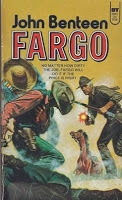
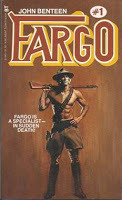
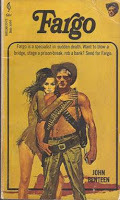 THE GOOD, THE BAD, AND THE VERY BAD ~ PART ONE Fargo lives with a gun in his fist. Guns and killing are all he knows. And Fargo likes what he knows. Want to start a revolution? Want to stop one? Send for Fargo. Want to blow a bridge, stage a prison break, rob a bank? Fargo’s your man.
THE GOOD, THE BAD, AND THE VERY BAD ~ PART ONE Fargo lives with a gun in his fist. Guns and killing are all he knows. And Fargo likes what he knows. Want to start a revolution? Want to stop one? Send for Fargo. Want to blow a bridge, stage a prison break, rob a bank? Fargo’s your man.
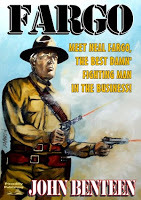 The Army taught Fargo how to kill with pistol, rifle, machine gun. He became an expert with knives, shotguns and women on his own time. Fargo hates the quiet life. He knows he’s going to get it sooner or later. He hopes it won’t be too much later because he wouldn’t know how to be old and comfortable. So while he lasts, Fargo plans to grab the world by the throat and take what he wants. If the world doesn’t like that, it can try to stop him ... if it can...DESCRIPTION FROM THE FIRST FARGO NOVEL Recently, I’ve blogged about a number of relatively obscure series from the men’s action adventure genre. Continuing the trend over the next couple of weeks, we saddle up for three iconic ‘60s western series written by John Benteen—the pseudonym of well-regarded and prolific writer Ben Haas.
The Army taught Fargo how to kill with pistol, rifle, machine gun. He became an expert with knives, shotguns and women on his own time. Fargo hates the quiet life. He knows he’s going to get it sooner or later. He hopes it won’t be too much later because he wouldn’t know how to be old and comfortable. So while he lasts, Fargo plans to grab the world by the throat and take what he wants. If the world doesn’t like that, it can try to stop him ... if it can...DESCRIPTION FROM THE FIRST FARGO NOVEL Recently, I’ve blogged about a number of relatively obscure series from the men’s action adventure genre. Continuing the trend over the next couple of weeks, we saddle up for three iconic ‘60s western series written by John Benteen—the pseudonym of well-regarded and prolific writer Ben Haas.
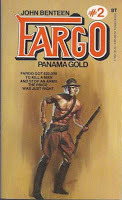 The main characters from all three series—Fargo, Sundance, and Cutler—have a devoted cult following among genre acolytes. The novels in each series stand apart from the other violence soaked westerns of the era, such as Edge, Crow, Claw (and countless others) written by the Piccadilly Cowboys (
CLICK HERE
). Neither do they fall into the arena of the popular adult sex-and-six-guns shoot-em-up western series like Longarm, Jake Slocum, or The Gunsmith (
CLICK HERE
). However, their combination of harsh, realistic ferocious action and adventurous backgrounds also set them apart from the more traditional Louis L’Amour style westerns.
The main characters from all three series—Fargo, Sundance, and Cutler—have a devoted cult following among genre acolytes. The novels in each series stand apart from the other violence soaked westerns of the era, such as Edge, Crow, Claw (and countless others) written by the Piccadilly Cowboys (
CLICK HERE
). Neither do they fall into the arena of the popular adult sex-and-six-guns shoot-em-up western series like Longarm, Jake Slocum, or The Gunsmith (
CLICK HERE
). However, their combination of harsh, realistic ferocious action and adventurous backgrounds also set them apart from the more traditional Louis L’Amour style westerns.
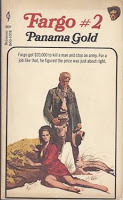 During the course of his career, Ben Haas wrote 130 novels under his own name, a dozen pseudonyms (including John Benteen), and a handful of publisher’s house names. The uniting factor of this vast output was the highly readable and sheer storytelling force he brought to every page. Haas’ goal was to be a mainstream writer, but needed to pay his bills while waiting for his serious fiction to find a publisher. Taking an opportunity to write a western for paperback publisher Tower Books, Haas furiously banged out Hell Of A Way To Die, quickly developing the spare, tightly written prose for which he became known. The novel became the fifth entry in Tower’s new Lassiter series (originated by wordslinger W.T. Ballard) published under the house name Jack Slade.
During the course of his career, Ben Haas wrote 130 novels under his own name, a dozen pseudonyms (including John Benteen), and a handful of publisher’s house names. The uniting factor of this vast output was the highly readable and sheer storytelling force he brought to every page. Haas’ goal was to be a mainstream writer, but needed to pay his bills while waiting for his serious fiction to find a publisher. Taking an opportunity to write a western for paperback publisher Tower Books, Haas furiously banged out Hell Of A Way To Die, quickly developing the spare, tightly written prose for which he became known. The novel became the fifth entry in Tower’s new Lassiter series (originated by wordslinger W.T. Ballard) published under the house name Jack Slade.
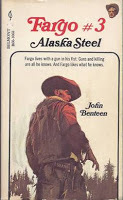 Impressed with Haas’ fast-paced muscular prose—a perfect fit for the burgeoning paperback original market—Tower publisher Harry Shorten asked Haas to create an original western series of his own. Recognizing a regular paying gig, Haas returned to assaulting his typewriter letting loose the taciturn, granite-hard, Neal Fargo in a series of neo-westerns now considered classics of the genre.
Impressed with Haas’ fast-paced muscular prose—a perfect fit for the burgeoning paperback original market—Tower publisher Harry Shorten asked Haas to create an original western series of his own. Recognizing a regular paying gig, Haas returned to assaulting his typewriter letting loose the taciturn, granite-hard, Neal Fargo in a series of neo-westerns now considered classics of the genre.
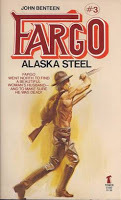 Under the pseudonym John Benteen—named after one of Custer’s cavalry officers—Haas wrote (or co-wrote with his son, Joel) twenty of the twenty three Fargo adventures. The other three books (Sierra Silver, Dynamite Fever, and Gringo Guns) are attributed to John W. Hardin—a pseudonym taken from a real life outlaw. According to fiction scholar
LYNN MUNROE
, John W. Hardin was most likely Norman Rubington, who also wrote an entry in Benteen’s Sundance series.
Under the pseudonym John Benteen—named after one of Custer’s cavalry officers—Haas wrote (or co-wrote with his son, Joel) twenty of the twenty three Fargo adventures. The other three books (Sierra Silver, Dynamite Fever, and Gringo Guns) are attributed to John W. Hardin—a pseudonym taken from a real life outlaw. According to fiction scholar
LYNN MUNROE
, John W. Hardin was most likely Norman Rubington, who also wrote an entry in Benteen’s Sundance series.
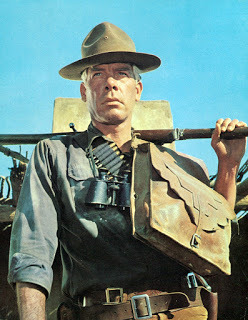 Common consensus is Haas based Fargo on the character portrayed by Lee Marvin in the 1966 movie The Professionals, which was written by Richard Brooks and based on the novel A Mule for the Marquesa by another popular western wordslinger, Frank O’Rourke. Brooks’ screenplay describes Marvin’s character, Faradan: He was one of Teddy Roosevelt’s Rough Riders, served in the Philippines, was a wildcatter and gold prospector, worked for Pancho Villa, and is now demonstrating automatic weapons to the Army. He is offered $10,000 for the dangerous assignment—all of which is a perfect description of Fargo. Marvin’s character also smokes black cigars and wears the campaign hat and cavalry boots, which are mainstays of Fargo’s wardrobe.
Common consensus is Haas based Fargo on the character portrayed by Lee Marvin in the 1966 movie The Professionals, which was written by Richard Brooks and based on the novel A Mule for the Marquesa by another popular western wordslinger, Frank O’Rourke. Brooks’ screenplay describes Marvin’s character, Faradan: He was one of Teddy Roosevelt’s Rough Riders, served in the Philippines, was a wildcatter and gold prospector, worked for Pancho Villa, and is now demonstrating automatic weapons to the Army. He is offered $10,000 for the dangerous assignment—all of which is a perfect description of Fargo. Marvin’s character also smokes black cigars and wears the campaign hat and cavalry boots, which are mainstays of Fargo’s wardrobe.
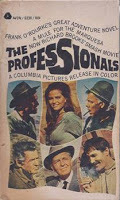 The image of Lee Marvin as Fargo has persisted ever since the books were first published. Piccadilly Publishing’s recent release of the Fargo novels in e-book format all carry a likeness of Lee Marvin as Fargo (as interpreted by artist Edward Martin) on the covers (
CLICK HERE
) along with this description:
The image of Lee Marvin as Fargo has persisted ever since the books were first published. Piccadilly Publishing’s recent release of the Fargo novels in e-book format all carry a likeness of Lee Marvin as Fargo (as interpreted by artist Edward Martin) on the covers (
CLICK HERE
) along with this description:
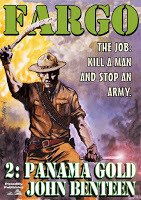 Neal Fargo—adventurer, lover and fighter—Fargo lives with a gun in his fist. Guns and killing are all he knows. And Fargo likes what he knows. Want to start a revolution? Want to stop one? Send for Fargo. Want to blow a bridge, stage a prison break, rob a bank? Fargo's your man...Tall and weather beaten, his prematurely white hair kept close-cropped, he still wears much the same outfit he wore in the service: cavalry boots, campaign hat, jodhpurs, or khaki pants, comfortable shirt...
Neal Fargo—adventurer, lover and fighter—Fargo lives with a gun in his fist. Guns and killing are all he knows. And Fargo likes what he knows. Want to start a revolution? Want to stop one? Send for Fargo. Want to blow a bridge, stage a prison break, rob a bank? Fargo's your man...Tall and weather beaten, his prematurely white hair kept close-cropped, he still wears much the same outfit he wore in the service: cavalry boots, campaign hat, jodhpurs, or khaki pants, comfortable shirt...
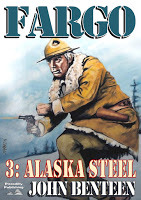 His weapons of war include a .38 with either a hip or shoulder holster, depending on his need at the time. Loading with hollow points for greater stopping power, he prefers it to the .45 automatic, which tends to jam, the army uses. His knife, a Batangas, made by Philippine artisans, has a razor sharp ten inch blade that folds back into the handle except for a few inches, popping out with a flick of the wrist. Fargo is quite expert with it and is ambidextrous, a little known fact hidden from his enemies, that has saved his life more than once in fights.
His weapons of war include a .38 with either a hip or shoulder holster, depending on his need at the time. Loading with hollow points for greater stopping power, he prefers it to the .45 automatic, which tends to jam, the army uses. His knife, a Batangas, made by Philippine artisans, has a razor sharp ten inch blade that folds back into the handle except for a few inches, popping out with a flick of the wrist. Fargo is quite expert with it and is ambidextrous, a little known fact hidden from his enemies, that has saved his life more than once in fights.
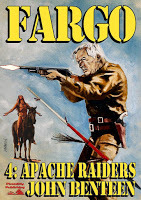 His favorite weapon, though, is the Fox Sterlingworth ten-gauge shotgun, sawed-off, and engraved along the inlay with the words, To Neal Fargo, gratefully, from T. Roosevelt. The former President and he are the only ones who know what he did to get the weapon. It's a deadly piece, loaded with shells of nine buckshot each. He's the only man Fargo will drop everything and come running when called...
His favorite weapon, though, is the Fox Sterlingworth ten-gauge shotgun, sawed-off, and engraved along the inlay with the words, To Neal Fargo, gratefully, from T. Roosevelt. The former President and he are the only ones who know what he did to get the weapon. It's a deadly piece, loaded with shells of nine buckshot each. He's the only man Fargo will drop everything and come running when called...
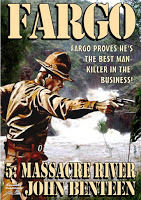 Writer and fictioneers extraordinaire
JAMES REASONER
rightly maintains the Fargo books are not really traditional Westerns as they are set in the 1910s, after the Wild West had been settled, and taking place in diverse locations such as the Philippines, Argentina, Nicaragua, Alaska and Peru. This distinction is part of the fun and what makes Fargo stand out among all his contemporaries.
Writer and fictioneers extraordinaire
JAMES REASONER
rightly maintains the Fargo books are not really traditional Westerns as they are set in the 1910s, after the Wild West had been settled, and taking place in diverse locations such as the Philippines, Argentina, Nicaragua, Alaska and Peru. This distinction is part of the fun and what makes Fargo stand out among all his contemporaries.
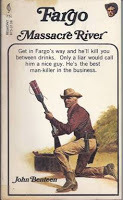
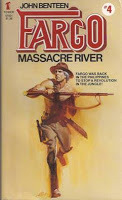
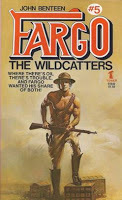
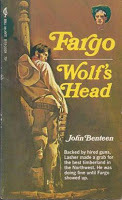
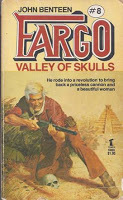
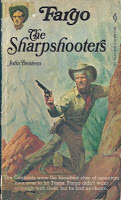
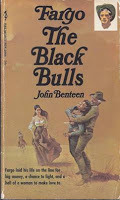
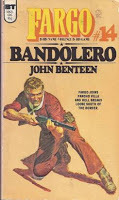
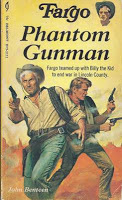
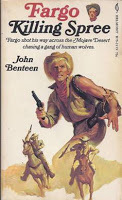
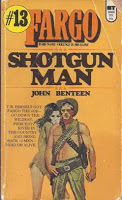
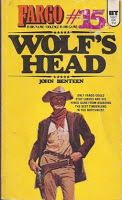
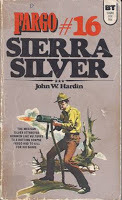
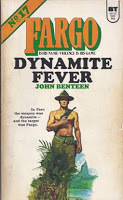
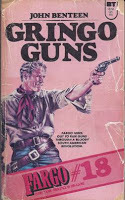
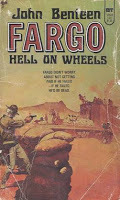
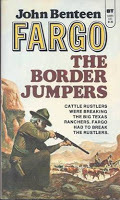
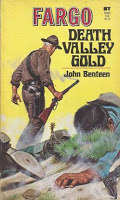
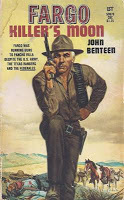
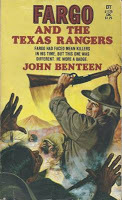
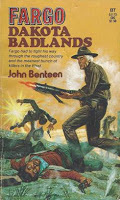 Prolific writer (
CLICK HERE
), blogger, and another true Fargo fan, JACK BADELAIRE, describes Fargo as a combination of giants from pop culture—To me, Neal Fargo is a combination of Robert E. Howard's Conan mixed with Sam Peckinpah's The Wild Bunch. Fargo, is a globe-trotting adventurer/mercenary in his late 30's, a highly-skilled and incredibly lethal fighting man who's already had a lifetime's worth of adventures. Like Conan, Fargo is a lone wolf, a man who trusts no one and nothing except, perhaps, his weapons. He fights for money and because it's what he's best at, and because he's one of the rare breed of men who, unashamedly, need to be in mortal conflict with man and the elements in order to feel alive. Fargo knows he'll meet a violent end one day, and you know his only hope is that he dies on his feet, surrounded by his enemies.
Prolific writer (
CLICK HERE
), blogger, and another true Fargo fan, JACK BADELAIRE, describes Fargo as a combination of giants from pop culture—To me, Neal Fargo is a combination of Robert E. Howard's Conan mixed with Sam Peckinpah's The Wild Bunch. Fargo, is a globe-trotting adventurer/mercenary in his late 30's, a highly-skilled and incredibly lethal fighting man who's already had a lifetime's worth of adventures. Like Conan, Fargo is a lone wolf, a man who trusts no one and nothing except, perhaps, his weapons. He fights for money and because it's what he's best at, and because he's one of the rare breed of men who, unashamedly, need to be in mortal conflict with man and the elements in order to feel alive. Fargo knows he'll meet a violent end one day, and you know his only hope is that he dies on his feet, surrounded by his enemies.
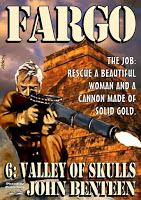
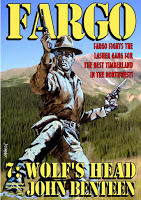
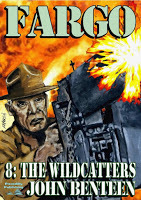
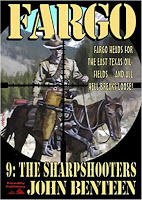
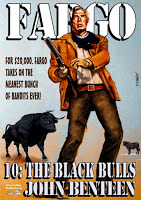
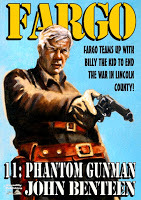
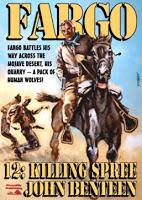
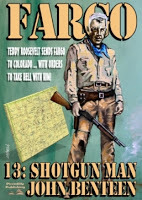
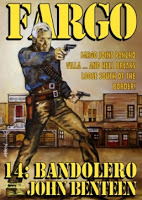 THE FARGO SERIES Fargo (1969)Panama Gold (1969)Alaska Steel (1969)Massacre River (1970)The Wildcatters (1970)Apache Raiders (1970)Valley of Skulls (1970)Wolf’s Head (1970)The Sharpshooters (1970)The Black Bulls (1971)Phantom Gunman (1971)Killing Spree (1971)Shotgun Man (1973)Bandolero (1973)Sierra Silver (John W. Hardin—1973)Dynamite Fever (John W. Hardin—1974)Gringo Guns (John W. Hardin—1975)Hell On Wheels (1976)The Border Jumpers (1976)Death Valley Gold (1976)Killer’s Moon (1976)Fargo and The Texas Rangers (1977)Dakota Badlands (1977) *Fargo #15 was originally assigned mistakenly to a reprint of #8 Wolf’s Head, which caused Belmont Tower to put #16 on what was actually the 15th book and triggering the misnumbering of the remaining books in the series. This accounts for the confusion regarding the total number of books—23 or 24—in the series…There are 23… FOR MORE ON THE INDIVIDUAL FARGO BOOKS FROM LYNN MUNROE CLICK HERE, AND HERE FOR BENTEEN/HAAS’ ADVICE ON HOW TO WRITE A WESTERN CLICK HERE FOR MORE ON THE FARGO SERIES CLICK HERE In Part Two next week, we’ll take on two other iconic western series from John Benteen—the popular Sundance—as mentioned above—and the unique, but less well received, Cutler…
THE FARGO SERIES Fargo (1969)Panama Gold (1969)Alaska Steel (1969)Massacre River (1970)The Wildcatters (1970)Apache Raiders (1970)Valley of Skulls (1970)Wolf’s Head (1970)The Sharpshooters (1970)The Black Bulls (1971)Phantom Gunman (1971)Killing Spree (1971)Shotgun Man (1973)Bandolero (1973)Sierra Silver (John W. Hardin—1973)Dynamite Fever (John W. Hardin—1974)Gringo Guns (John W. Hardin—1975)Hell On Wheels (1976)The Border Jumpers (1976)Death Valley Gold (1976)Killer’s Moon (1976)Fargo and The Texas Rangers (1977)Dakota Badlands (1977) *Fargo #15 was originally assigned mistakenly to a reprint of #8 Wolf’s Head, which caused Belmont Tower to put #16 on what was actually the 15th book and triggering the misnumbering of the remaining books in the series. This accounts for the confusion regarding the total number of books—23 or 24—in the series…There are 23… FOR MORE ON THE INDIVIDUAL FARGO BOOKS FROM LYNN MUNROE CLICK HERE, AND HERE FOR BENTEEN/HAAS’ ADVICE ON HOW TO WRITE A WESTERN CLICK HERE FOR MORE ON THE FARGO SERIES CLICK HERE In Part Two next week, we’ll take on two other iconic western series from John Benteen—the popular Sundance—as mentioned above—and the unique, but less well received, Cutler…
Published on August 14, 2016 16:07
No comments have been added yet.



